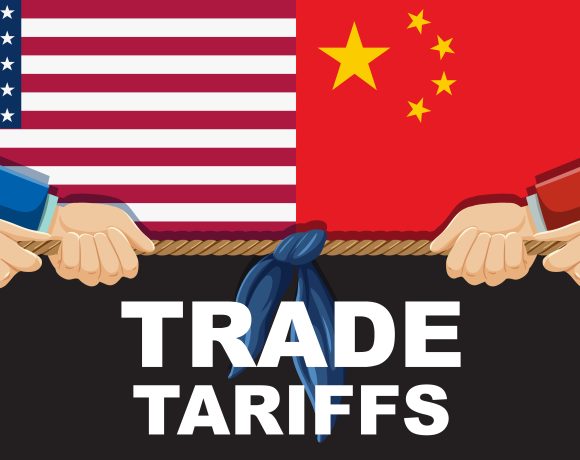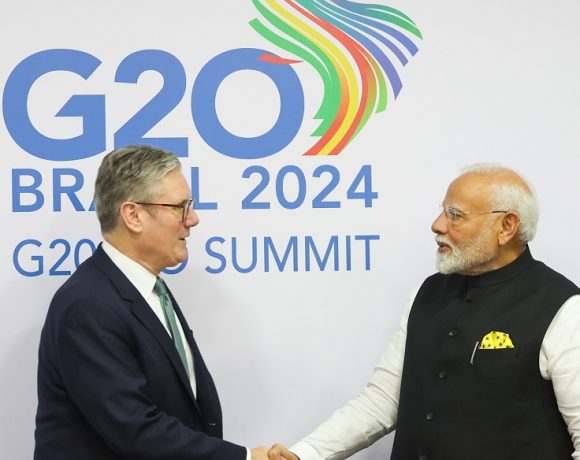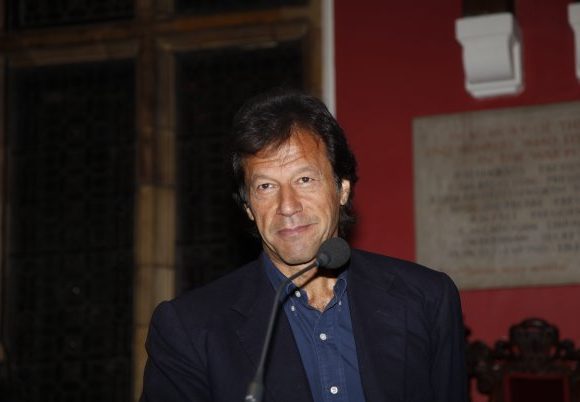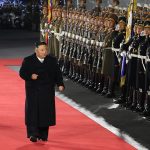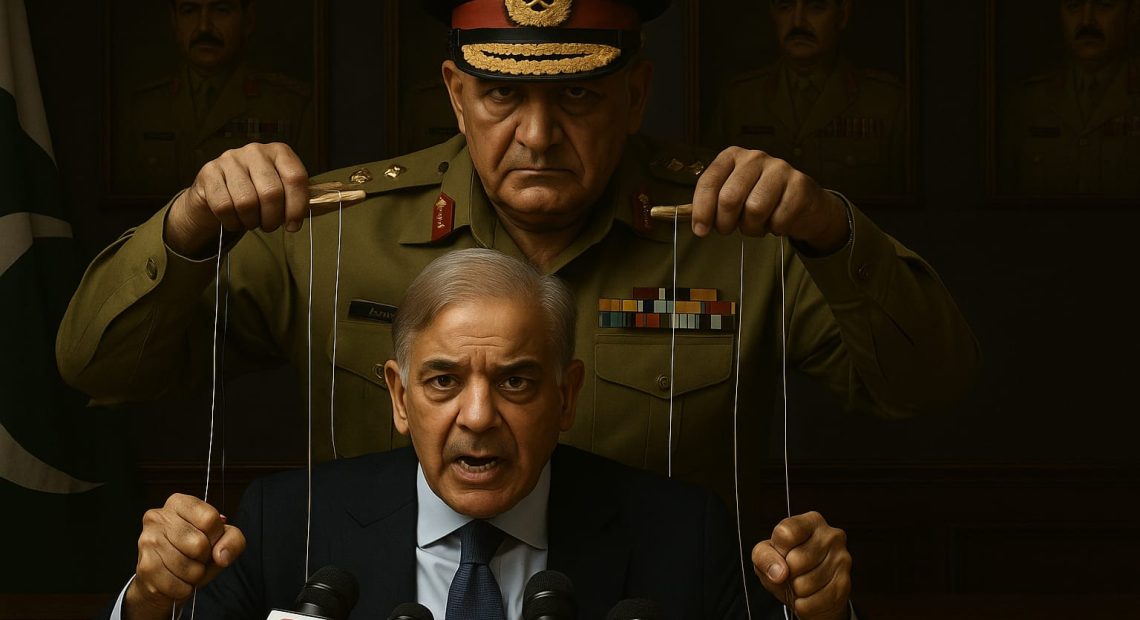
The Ceasefire That Saved Pakistan from Two Wars: India at the Border, Munir in the Shadows
In the volatile and paranoia-infused corridors of Pakistan’s establishment, the line between external aggression and internal ambition often blurs. In April 2025, that line almost vanished completely. General Asim Munir—Pakistan’s Army Chief known as much for his theological posturing as for his battlefield invisibility—sought to turn the temperature up at the borders in a carefully calibrated provocation. From inviting Hamas representatives to Pakistan to delivering inflammatory speeches about Hindu-Muslim destinies, Munir positioned himself not just as a military leader but as a savior of Pakistan’s ideological soul.
The Pahalgam terror attack, which killed dozens of Indian civilians in Kashmir, was not a spontaneous escalation—it was engineered. Munir, with his deep roots in the Inter-Services Intelligence (ISI), used Pakistan’s long-standing affiliations with terror outfits like Lashkar-e-Taiba and Jaish-e-Mohammed to manufacture a flashpoint. The attack bore all the hallmarks of Pakistan’s military-intelligence nexus: surgically targeted, timed to coincide with internal political instability, and designed to provoke an Indian response that could justify tightening military control domestically.
What followed was not merely a border skirmish—it was a domino of retaliation, international alarms, and a counter-offensive by India that stunned Pakistan’s military calculus. But the more dramatic twist lay off the battlefield. As Pakistan’s civilian government grew increasingly irrelevant, whispers of a military power grab by Munir grew louder. It was in this moment that the United States, sensing what was truly at stake, stepped in—not just to stop a war between nuclear neighbors, but to stall a silent coup underway inside Pakistan.
This white paper traces that sequence. It reconstructs the timeline of events, lays out the evidence of Munir’s attempted overreach, examines India’s military and diplomatic responses, and concludes by exposing the true significance of the U.S.-brokered ceasefire: it didn’t just stop missiles, it stopped Munir.
Timeline of Escalation: From Pahalgam to the Ceasefire
April 22, 2025 – The Pahalgam Massacre
A coordinated and premeditated terrorist assault was carried out in the tourist-heavy Baisaran Valley near Pahalgam, Jammu & Kashmir. Armed militants opened fire indiscriminately on Hindu tourists, killing 26 civilians, including three foreign nationals. Eyewitnesses and survivors confirmed the sectarian nature of the killings—victims were reportedly forced to recite Islamic prayers, and those unable to do so were shot point blank. The Resistance Front (TRF), a Lashkar-e-Taiba proxy, initially claimed responsibility through encrypted Telegram channels, only to later withdraw the claim under mysterious circumstances, citing a supposed “security breach.” India, however, had already traced the weapons used—M4 carbines and Chinese-made grenades—to known Lashkar and ISI caches. Within hours, New Delhi held Pakistan responsible. This was not a rogue operation—it was strategic, surgical, and state-enabled.
April 23–30, 2025 – India’s Strategic Retaliation Without a Single Bullet
New Delhi responded not with missiles, but with maneuvering. The Ministry of External Affairs declared the Indus Waters Treaty suspended until further notice. All existing Pakistani visas were canceled, and border crossings—especially Wagah and Munabao—were sealed to commercial and civilian traffic. Simultaneously, intelligence intercepts suggested that Pakistan’s media and military arms had begun coordinated narrative preparation. Statements by DG ISPR and Pakistan’s foreign ministry warned of an “imminent Indian attack,” clearly laying the groundwork for victimhood before retaliatory measures had even begun. The tipping point came when images surfaced from Muridke, where funerals of the slain TRF militants were conducted with Pakistani flags, military personnel in attendance, and speeches delivered by Hafiz Abdul Rauf, brother of UN-sanctioned terrorist Masood Azhar. It confirmed what Delhi had claimed: the Pakistani state was not just complicit—it was hosting, honoring, and institutionalizing terror.
May 6, 2025 – Operation Sindoor Begins: The Calm Precision of Indian Might
At precisely 1:05 AM IST, Indian Air Force jets crossed the Line of Control and launched precision strikes on designated terror hubs in Pakistan and PoK. The JeM facility in Bahawalpur and the LeT command center in Muridke were primary targets. Open-source satellite intelligence later verified destruction of structures known for decades as training and logistics centers. Importantly, Indian strikes avoided military cantonments or civilian population zones. Sky News journalists on-ground in Muridke confirmed the damage at “previously flagged militant strongholds.” This operation wasn’t vengeance—it was vector-calibrated message delivery. Pakistan responded with threats but withheld immediate military retaliation, likely due to the precision and international restraint India displayed.
May 7, 2025 – Indian Air Superiority Demonstrated
In the early hours of May 7, India expanded its operations with a high-altitude incursion targeting Pakistan’s key forward airbases. Sukkur and Skardu airbases—often used for UAV and artillery coordination—were struck with loitering munitions. Meanwhile, Indian Navy drones launched from INS Vikrant reportedly surveilled southern Pakistan’s coastline, particularly Karachi Port, which by dawn appeared deserted on commercial marine radars. Pakistan’s early retaliation was muted, consisting largely of radar jamming and airspace denial declarations. However, a barrage of missiles launched was intercepted near Sirsa and Bikaner by India’s Barak-8 and S-400 systems. Civilian panic was reported in northern Rajasthan, but no casualties occurred. India’s restraint remained tactical but purposeful—telegraphing its military capacity without over-escalation.
May 8, 2025 – Radar Blackout, Pakistani Escalation, and Indian SEAD Ops
By the morning of May 8, India had activated a full spectrum of Suppression of Enemy Air Defence (SEAD) operations. One of the most consequential strikes occurred just outside Lahore, where satellite heat signatures and secondary explosions confirmed the destruction of a Chinese-origin HQ-9B radar complex. This facility was a lynchpin of Pakistan’s northwestern aerial early-warning network and its neutralization rendered vast portions of airspace blind. This wasn’t a symbolic strike—it was a calculated demolition of command infrastructure.
Meanwhile, on the Pakistani side, the retaliatory machinery began sputtering into motion. Pakistani drones—many identified as Turkish Songar variants—were launched toward Indian positions in Barmer, Firozpur, and Samba. While most were shot down by Indian Army Air Defence units using QRSAM systems, debris landed dangerously close to civilian zones. Pakistan also tested its ballistic threat envelope again, launching another Fatah-II missile at India’s Punjab sector. The missile was intercepted 130 kilometers deep inside Indian territory near Sirsa, Haryana. Indian authorities later released debris footage showing clear serial markings, which were also picked up by NASA’s FIRMS satellite heat maps—proving the strike attempt beyond doubt.
Civilian airspace across northern India remained restricted, and operations at several IAF airbases continued under blackout protocols. In a crucial internal move, India elevated its Joint Command readiness level in the Western Theatre to ‘Tri-Services Alert’, authorizing naval, air, and ground commanders to operate autonomously within defined engagement rules. The message was clear: India was not only defending, it was also preparing for protracted escalation.
Pakistani responses began to look increasingly desperate. Videos began to circulate on social media of Pakistani air force jets being relocated to undisclosed rural runways, and there were reports—unverified at this stage—of military assets being moved into civilian facilities like school compounds in Okara and Vehari. The ISPR continued to push the narrative of Indian “aggression,” but the strategic picture by sunset was unmistakable: Pakistan was on the back foot.
May 9, 2025 – The Crack in the Wall: Domestic Disarray in Pakistan and India’s Measured Dominance
May 9 marked a critical inflection point in the conflict—militarily, diplomatically, and politically. While Indian forces continued their focused operations, intelligence inputs and global media coverage began highlighting the widening cracks inside Pakistan’s own establishment.
Indian drones—believed to be Heron TP variants—conducted deep surveillance runs across Pakistani airspace, capturing high-resolution imagery of airbase bunkers in Sialkot, Rahim Yar Khan, and Bholari. By noon, coordinated drone strikes hit radar domes and UAV control units in Murid and Chunian. India’s Ministry of Defence stated these were “non-human targets, with no civilian proximity.” Independent satellite analysts later confirmed the destruction of two Shaheen missile storage shelters in Sargodha.
As India dismantled Pakistan’s retaliatory capabilities piece by piece, Pakistan’s internal front began to fray. Reports emerged from Islamabad and Lahore that senior PML-N ministers had been temporarily relocated to military-secured zones, with multiple eyewitnesses confirming military vehicles around the Prime Minister’s residence. Simultaneously, local Pakistani media was ordered off-air in several cities—Bahawalpur, Quetta, and Multan—on “emergency frequency recalibration.” The implication was unmissable: a soft military lockdown was being tested.
International media picked up the tremors. Sky News aired a segment highlighting that key Pakistani airbases had turned into ghost installations, with Chinese and Turkish advisors reportedly being evacuated. CNN ran a breaking report citing White House sources that Pakistani nuclear assets had been repositioned “as a precaution,” while U.S. surveillance had flagged increased heat signatures near Pakistan’s tactical storage depots. These revelations, alongside whispers of General Munir chairing emergency meetings without civilian oversight, painted a dangerous picture.
India, meanwhile, maintained composure. No provocative public statements were issued. The Indian Foreign Secretary refused to even name Pakistan in his press conference. Instead, India allowed visuals to do the talking: press-released footage showed intercepted Fatah-II missiles, Turkish drone wreckage near Barmer, and Indian soldiers on alert—but calm—along the LoC.
By nightfall, the diplomatic hotline between Washington and New Delhi had lit up. The Americans weren’t just asking for calm—they were explaining stakes. Vice President JD Vance was reportedly briefed by the National Security Council and military intelligence that a coup—or something akin to one—was underway in Pakistan. For India, the war was already won tactically. The question was whether to push forward or pause and let Pakistan implode under its own contradictions.
May 10, 2025 – The Ceasefire Deal and Asymmetrical Motives
What unfolded on May 10 was not just a de-escalation agreement—it was a diplomatic intervention designed to prevent a geopolitical collapse. While the world interpreted the ceasefire as a bilateral pause between two nuclear powers, the reality was far more asymmetrical. One side—the Indian state—was exercising restraint from a position of military dominance. The other—the Pakistani civilian regime—was clinging to its last institutional lifeline, threatened not just by war but by the ambitions of its own army chief.
Late in the night of May 9, reports emerged that a U.S.-drafted ceasefire framework had been conveyed to both sides via backchannel emissaries. Vice President JD Vance and Secretary of State Marco Rubio, after earlier signaling a hands-off approach, reversed course following credible U.S. intelligence assessments that revealed Pakistan had placed some of its tactical nuclear assets on mobile deployment. Even more critically, these assessments included intercepted communications suggesting General Asim Munir had convened a “crisis authority council” without civilian oversight—a clear precursor to a military power grab.
In New Delhi, Prime Minister Modi’s war cabinet convened for the third time in 48 hours. According to sources later quoted by The Hindu and WSJ, the cabinet was presented with two assessments: one, that Pakistan’s retaliatory capacity was now below 20% of its pre-war levels; and two, that further escalation could destabilize Pakistan to the point of civil breakdown—thereby giving the military its excuse to take over. The Indian leadership made a calculated decision: accept the ceasefire terms, allow Pakistan to save face internationally, and deny General Munir the pretext he was courting.
By evening on May 10, both countries confirmed a ceasefire would take effect at 6:00 PM IST. The contrast in communications was glaring. India issued a two-sentence press release confirming adherence and stating that its armed forces “remain on high operational readiness.” There was no mention of third-party mediation. No diplomatic flourish. No gratitude.
Meanwhile, Prime Minister Shehbaz Sharif held a live broadcast, flanked by military officers, visibly shaken but effusive in his thanks. He named the United States, Saudi Arabia, UAE, Türkiye, and China, thanking them for “helping to restore calm.” What went unsaid, but unmistakably implied, was that the ceasefire had also restored his grip on power—albeit temporarily.
Within hours of the ceasefire, however, ceasefire violations began to occur. Pakistani drones were spotted over Barmer and Anantnag. Mortar fire was reported in the Bhimber sector. But this time, India didn’t react with fury—it reacted with surveillance. It was clear to the Indian establishment that the war it had just paused was only one dimension of the crisis. The other—Pakistan’s internal unraveling—was still underway.
May 11, 2025 – The Resumption of Tensions and the Ceasefire’s Real Cost
The ink on the ceasefire was barely dry before the familiar tremors returned. In the early hours of May 11, local reports and Indian intelligence sources confirmed multiple drone sightings across Jammu, Anantnag, Jaisalmer, and Firozpur. Some were shot down, others retreated—none were acknowledged officially by Pakistan. Mortar shelling was reported across the RS Pura, Kotli, and Bhimber sectors. Indian forces responded proportionately but refrained from escalation. What emerged over the next 48 hours was not peace, but pause. A breather—not for India, but for a tottering civilian regime in Pakistan.
India’s official stance was sharply articulated by Foreign Secretary Vikram Misri. In a statement that lasted under five minutes, he declared that “while India respects ceasefire agreements, it does not indulge in illusions.” His tone was cold, pointed, and meant for multiple audiences. The diplomatic corps understood that India had granted Pakistan the benefit of strategic ambiguity—for now. The military understood that high alertness remained the default. And most crucially, global observers understood that India had complied with the ceasefire, not because it needed to, but because it chose to.
Meanwhile, Pakistan’s domestic situation remained volatile. Independent journalists in Karachi and Lahore reported military checkpoints springing up in civilian zones. Footage emerged of private jets taking off from Islamabad airport—rumored to be evacuations of high-ranking political families. In Quetta, the Balochistan Liberation Army (BLA) reportedly launched simultaneous attacks on two military posts, exploiting the vacuum in command focus. Videos surfaced showing Pakistani soldiers abandoning checkpoints—evidence of morale collapse and command confusion.
The most damning revelation, however, came from a leaked EU diplomatic cable accessed by Le Monde. The cable suggested that the real fear within Western embassies wasn’t a breakdown of Indo-Pak ceasefire—it was the fear that Pakistan’s nuclear assets could become bargaining chips in a domestic coup. The same fear that had prompted Washington to pressure both Delhi and Rawalpindi into a ceasefire had now returned with amplified urgency.
In retrospect, May 11 confirmed what May 10 only implied: the ceasefire wasn’t a resolution. It was a firewall—designed not to keep India and Pakistan apart, but to prevent Pakistan from combusting inward. India had tactically withdrawn from a military upper hand. Not because it lacked resolve, but because it had already won what it needed. For Pakistan, the ceasefire saved more than just territory. It saved a civilian regime from being written out of its own constitution.
Circling Back To The Terror Attack and TRF’s Pakistani Links
The Pahalgam massacre on April 22, 2025, was not an aberration. It was an act rooted in precedent, logistics, and state complicity. The Resistance Front (TRF), the group that initially claimed responsibility for the attack, is widely recognized by global intelligence agencies as a proxy for Lashkar-e-Taiba (LeT)—a UN-designated terrorist organization nurtured by the Pakistani military-intelligence complex.
What set the Pahalgam attack apart was not just the scale, but the manner in which it was conducted. Survivors recounted that the attackers selectively targeted Hindu pilgrims and domestic tourists. Victims were reportedly asked to recite Islamic prayers before being executed. This wasn’t just terrorism—it was sectarian execution, choreographed for psychological impact and designed to provoke.
Indian security agencies recovered forensic evidence from the site, including weaponry such as American-origin M4 carbines and Chinese-manufactured grenades—hallmarks of LeT’s arsenal. Further, intercepted communications by Indian intelligence indicated cross-border coordination days before the attack. These intercepts referenced specific GPS coordinates, pre-arranged exfiltration plans via Rajouri, and code-names linked to handlers in PoK and Punjab (Pakistan).
Most damning were the funerals. Within 48 hours of the encounter, funeral processions were held in Muridke and Muzaffarabad for three of the slain terrorists. Their coffins were wrapped in Pakistan’s national flag, their last rites presided over by Hafiz Abdul Rauf—brother of Masood Azhar and a senior Jamaat-ud-Dawa leader. Uniformed personnel, including Pakistan Rangers and ISI officers, were visibly present, as captured in leaked drone footage later released by Indian media.
The timing was also key. The attack occurred shortly after General Asim Munir returned from a controversial address at a Pakistan Army base where he had invoked the “two-nation theory” and referred to Kashmir as “unfinished business.” His ideological posture had become increasingly aggressive in preceding months, and the alignment of his rhetoric with the TRF’s operational pattern raised concerns even among Western diplomats.
Western media outlets, including Sky News and Deutsche Welle, picked up on these links. Sky News geolocated social media videos from Muridke, showing TRF-affiliated sympathizers openly declaring martyrdom narratives inside the Markaz-e-Taiba compound—a compound which had been previously flagged by UN sanction panels and was supposed to have been decommissioned.
The Pahalgam attack, therefore, was not just a trigger for conflict—it was a case study in how terror, theology, and state machinery intersect in Pakistan. For India, this wasn’t an intelligence breakthrough—it was confirmation of a pattern long known but rarely acknowledged so publicly by the world. And for General Munir, it was the opening act of a campaign that nearly tore apart the region and his own country in pursuit of unchecked power.
Analyzing India’s Diplomatic and Military Response
India’s response to the Pahalgam attack was neither erratic nor purely emotional—it was strategically layered, diplomatically agile, and militarily exacting. Within 24 hours of the April 22 massacre, India had activated an array of international channels to present the attack not merely as another episode of cross-border terrorism, but as a prelude to state-sponsored escalation. The first move came from the Ministry of External Affairs: the Indian envoy in Islamabad was recalled, and the Pakistani High Commissioner was summoned and handed a dossier that contained intercepts, weapon origin traces, and satellite imagery of known terror hubs in Pakistan.
At the United Nations, India’s Permanent Representative made a scathing intervention, holding Pakistan accountable not just for fostering terrorism but for enabling “systematic state-aligned sectarian violence.” The narrative was sharpened by India’s disclosure that one of the weapons used in Pahalgam had been part of a consignment seized during the 2021 Narayanpur arms drop case—an earlier attempt to infiltrate LeT weapons via Nepal.
India followed up with tangible punitive steps. The Indus Waters Treaty, a foundational bilateral agreement, was suspended unilaterally. All Pakistani visas were canceled, and cross-border trade routes—including Attari-Wagah and Munabao-Khokhrapar—were shut down indefinitely. These were not symbolic gestures. They choked Pakistan’s already fragile economic arteries and escalated diplomatic isolation.
Militarily, India activated a calibrated doctrine of proportional dominance. Operation Sindoor was not announced publicly at first, but its execution left no ambiguity. On May 6, India launched a wave of precision air and drone strikes on key terror infrastructure in Bahawalpur, Muridke, Muzaffarabad, and Kotli. The targets were not military or civilian zones, but assets explicitly linked to groups like JeM, LeT, and Hizbul Mujahideen.
The use of loitering munitions, electronic warfare pods, and satellite-assisted targeting systems underscored a shift in Indian doctrine—from reactive counter-terrorism to preemptive degradation. Notably, India’s Rafales operated without airspace violation complaints from third-party nations, suggesting prior diplomatic signaling had either gained tacit approval or earned strategic silence.
Even more consequential was India’s air defence posture. By May 7, the S-400 ‘Sudarshan Chakra’ regiments stationed in Punjab and Rajasthan had intercepted over 30 aerial threats, including Turkish-manufactured Songar drones and multiple Fatah-II ballistic missiles. India’s interception near Sirsa—deep within its own territory—was particularly alarming for foreign observers. The trajectory, if unchecked, could have reached the Delhi National Capital Region.
At sea, the Indian Navy deployed the INS Vikrant strike group in the Arabian Sea, shadowing maritime traffic near the Karachi port. Naval reconnaissance drones confirmed large-scale military repositioning in Gwadar and Pasni. However, Indian naval activity remained defensive in structure, signaling strength without triggering escalation.
Perhaps the most striking component of India’s response was its rhetorical restraint. Prime Minister Modi made no public statement during the height of the military action. The Ministry of Defence released technical briefings but avoided inflammatory language. This was not a war India wanted—but it was a message India needed to deliver. Loud enough for Islamabad to hear. Quiet enough for the world to respect.
Munir’s Power Play: Pattern of Pakistan’s Generals
General Asim Munir’s actions in the aftermath of the Pahalgam attack did not emerge in a vacuum. They followed a playbook etched into Pakistan’s political DNA—one where its most powerful military leaders have, time and again, leveraged national security crises to consolidate control and sideline elected governments. Munir’s trajectory echoed that of Ayub Khan (1958), Zia-ul-Haq (1977), and Pervez Musharraf (1999), each of whom used India-centric confrontations as political accelerants to grab absolute power.
Munir, unlike his predecessors, came into office with an unusual mix of clerical conservatism and intelligence-bred ambition. As the former Director-General of the ISI, he maintained deep institutional linkages with militant proxies. His tenure was marked by growing interference in civilian matters, including media censorship, judicial reshuffles, and surveillance of opposition leaders—especially those aligned with Imran Khan.
What changed in 2025 was the tone and pace of Munir’s rhetoric. In multiple speeches delivered across Rawalpindi, Abbottabad, and Lahore in the months before the Pahalgam attack, Munir began invoking not just nationalism, but religious destiny. He referred to India as “a civilizational threat” and publicly praised Pakistan’s alignment with groups like Hamas—an unprecedented act for a serving COAS.
By the time the Pahalgam attack occurred, the Pakistani civilian government under Shehbaz Sharif had already been eclipsed in terms of narrative control. The Inter-Services Public Relations (ISPR), under Munir’s tacit approval, began releasing daily bulletins framing the attack as a “reaction to Indian occupation” and refused to condemn TRF’s affiliation with LeT.
As India’s counter-strikes intensified and Pakistan’s retaliatory capacity began to erode, Munir’s public appearances became rare, but his control grew more visible. Multiple international correspondents noted that all government press briefings featured military figures, not ministers. Civilian leaders were missing from the war rooms. At one point, even the Prime Minister’s address was delayed until “final clearance” from GHQ—according to leaks cited by Dawn’s political editor.
The clearest evidence of Munir’s attempted overreach came on May 9 and 10. Intelligence shared with the United States—later confirmed by CNN and Sky News—revealed that Munir had convened what was internally called a “crisis authority council” that excluded the Prime Minister’s Office. Simultaneously, Pakistan’s nuclear units were quietly placed on mobile deployment—an action that typically requires civilian head-of-state authorization under Pakistan’s national command structure.
Western diplomats began ringing alarm bells. EU embassies downgraded their operational footprints. Gulf allies of Pakistan—especially the UAE and Saudi Arabia—reportedly made direct calls to GHQ expressing concerns over “unconstitutional transitions.” The United States, in its clearest intervention, used this intelligence to pressure Shehbaz Sharif into accepting a ceasefire—not just to stop the conflict with India, but to interrupt Munir’s momentum.
Thus, Munir’s actions were not merely wartime maneuvers—they were coup signaling. History repeated itself in slow motion, and this time, it was arrested not by domestic resistance, but by international diplomacy. Munir may have lit the match, but the world stepped in before he could torch the state.
The U.S.-Brokered Ceasefire: Who Really Wanted It?
On paper, the ceasefire announced on May 10 was a mutual diplomatic success. In reality, it was an asymmetric rescue mission—engineered not to save both parties from a war, but to save one of them from imploding. While India accepted the ceasefire from a position of operational dominance, Pakistan came to the table from the edge of regime collapse. It was not the threat of Indian bombs that forced Islamabad to seek de-escalation—it was the imminent threat of a palace coup.
The shift in tone from Washington was the first giveaway. Vice President JD Vance had, just days earlier, told the press that a war between India and Pakistan was “none of America’s business.” But on May 9, that changed. CNN and Politico both reported that Vance and Secretary of State Marco Rubio were briefed with satellite and signals intelligence indicating two alarming developments: Pakistan had moved nuclear warheads out of fixed locations, and General Munir had convened strategic decision-making councils without the inclusion of elected civilian leaders.
This triggered an immediate change in diplomatic tempo. The White House made direct calls to South Block in New Delhi and to the Prime Minister’s Secretariat in Islamabad. India, while maintaining military alertness, engaged through silent channels but never publicly acknowledged U.S. pressure. Pakistan, on the other hand, began publicly thanking global actors—particularly the U.S., Saudi Arabia, the UAE, and China—within minutes of the ceasefire announcement.
Shehbaz Sharif’s public address after the ceasefire was telling. He looked relieved, not victorious. He explicitly thanked the U.S. for “intervening in time.” What exactly was that time? Analysts suggest it coincided with chatter picked up by NATO and European defense attaches, who warned of Pakistani military units being repositioned in major cities under the guise of “strategic dispersal.” Meanwhile, news of media blackouts, civilian aircraft being grounded, and opposition leaders being placed under unofficial house arrest added to the chaos.
India, by contrast, released no names and showed no gratitude. It merely confirmed it would honor the ceasefire terms while reserving its right to respond to violations. Foreign Secretary Vikram Misri’s one-line statement—“We are not in the business of seeking peace with saboteurs”—summed up New Delhi’s stance. The war had not been lost. It had been postponed, and India had ensured that the postponement hurt Pakistan more.
From a global optics perspective, the U.S. emerged as the peacemaker. But in truth, it had acted to prevent a nuclearized, unstable Pakistan from triggering a larger regional crisis. India’s restraint gave it moral high ground. Pakistan’s desperation gave away the game. The ceasefire saved Pakistan from two wars—one across the border, and one within its own fragile state.
Conclusion: A Pause, Not a Peace
The ceasefire of May 10 may have stopped the missiles, but it did not resolve the deeper fault lines that triggered the conflict in the first place. General Asim Munir’s attempt to hijack Pakistan’s democratic framework through manufactured escalation was temporarily thwarted—not by Pakistan’s institutions, but by the intervention of foreign powers and India’s strategic discipline. The conflict revealed a truth long whispered but rarely acknowledged in diplomatic corridors: that Pakistan’s military establishment continues to be the greatest threat to both regional peace and its own democracy.
India, having successfully neutralized immediate military threats and exposed the duplicity of Pakistan’s narrative, must now prepare for a more subtle theatre. The instability inside Pakistan is far from over. As long as figures like Munir command both weapons and ideology, and as long as Pakistan’s military retains its veto over civilian governance, any calm is temporary. The ceasefire was not a treaty—it was a circuit breaker.
In this context, continued vigilance is not optional for India—it is existential. Strategic deterrence must be maintained, diplomatic capital must be preserved, and above all, intelligence monitoring of Pakistan’s military ecosystem must remain relentless.
General Munir’s playbook was textbook Pakistan: provoke India, manufacture victimhood, and consolidate military control under the guise of national security. But this time, India’s calibrated response dismantled the entire structure. His narrative collapsed, his command exposed, and his ambitions delayed—if not defeated. However, history teaches us that Pakistan’s generals don’t retreat; they wait. India cannot afford complacency—not now, not ever.
— Darshan Walawalkar, Partner, Statscope India Research
Research Partner for the article:
Statscope India Research
[www.statscope.in]


